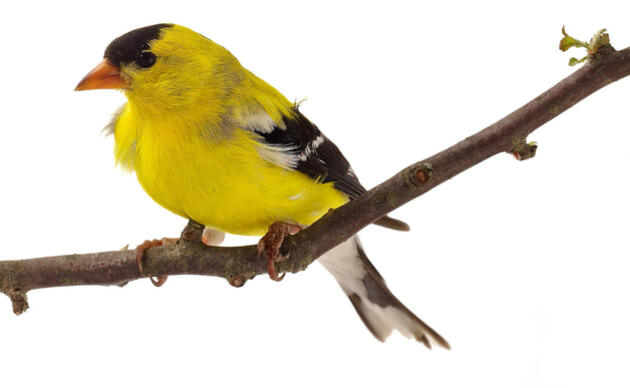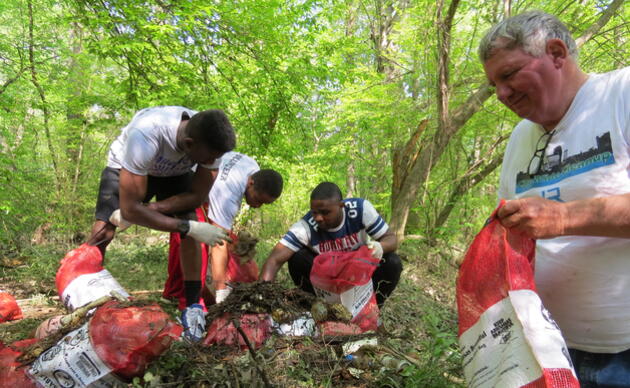By Mike Scott. Original article published by The Times Picayune.
It was on an earlier trip to the Mississippi Delta during which Teddy Roosevelt's actions would spawn what would become easily his most well-known legacy -- that would be, for better or worse, the introduction of the Teddy bear -- when he famously refused to shoot a captive black bear while hunting in Mississippi in 1902. But some 13 years later, in June 1915, the then-ex-president made a follow-up trip to Louisiana that, while nowhere nearly as well known, or as oft repeated, as that apocryphal Teddy bear tale, proved him to be ten times the sportsman.
The second Roosevelt trip -- which took place 101 years ago this week -- would also mark a key moment in the protection of wildlife in the Sportsman's Paradise, and in the United States. What's more, a new-fangled motion-picture camera was there to capture it all.
Roosevelt, of course, was famous for his love of the outdoors. Though asthmatic as a child, he refused to surrender to his illness. Instead, he decided he would work to overcome it. So, as legend has it, he set about training his body to become rough, durable -- manly.
In the process, he would become, in addition to a noted soldier and legendary Rough Rider, an avid hunter and naturalist.
Which is what drew the sitting president in November 1902 to Smedes, Miss., a mere speck on the edge of the Yazoo River about 30 miles north of Vicksburg, for that now-famous bear hunt.
"He was clad in hunting costume, khakaline riding trousers, heavy leather leggings, blue flannel shirt, corduroy coat and wore on his head a brown slouch hat," read a newspaper write-up describing his get-up upon stepping off the train in Mississippi on Nov. 13. ""Around his waist was buckled his cartridge belt and at his side hung his ivory-handled hunting knife."
Led by John M. Parker of New Orleans and accompanied by, among others, John McIlhenny -- the son of Tabasco sauce inventor Edmund McIlhenny and a friend of Roosevelt's from their Rough Rider days -- the president and his retinue plunged into the wilderness, heading to a camp of four tents (one for cooking and three for sleeping) some 15 miles west of Smedes and at least 16 miles from pretty much anywhere else.
"It will be rough work," said Mr. Parker, according to an exchange published in The Daily Picayune of Nov. 14.
"That is exactly what I want," replied President Roosevelt.
"But we will have bear meat for Sunday dinner," added Mr. Parker.
"Let us get the bear before we arrange for the dinner," responded the President, laughing heartily.
Joke or not, it would end up being a prophetic statement. For the next few days, newspapers around the country carried dispatches from the little camp in Mississippi's Sunflower Swamp near the headwaters of the Bogue Falaya River. More specifically, they carried reports of the hunt's futility.
"Roosevelt is in Hard Luck," read a headline on Nov. 16, chronicling the third day of the hunt. A sub-head added: "No Fresh Bear Skin Hung Up in the President's Camp."
Two days later, the headline wasn't much different, reading, "Roosevelt Did Not Get a Single Shot at a Bear." (Meanwhile, in Norfolk, Va., former president Grover Cleveland bagged 80 ducks on a hunting trip, noted a short item published on the same page.)
As it turns out, the closest the president would come to bagging a bear was on the hunt's second day. That's when the party's dogs caught the trail of an ill-fated bruin and chased it into the swamp, eventually exhausting it and seizing upon it. The first person on the scene was tracker Hoke Collier, who -- rather than shooting it -- hit the bear on the head with his rifle and tied it to a tree so the president could do the honors.
Roosevelt, as it turns out, would have none of that.
"When the President arrived he would neither shot it nor permit it to be shot," read a dispatch published in The Daily Picayune of Nov. 15, 1902. " 'Put it out of its misery,' he said to Mr. Parker, and the latter ended its life with a knife."
Although described as "lean," the bear weighed a reported 285 pounds. Regardless, it was transformed into a sad-eyed cub for the purposes of a Washington Post editorial cartoon, which depicted Roosevelt's refusal to shoot a captive animal. The caption: "Drawing the line in Mississippi."
Just like that -- and with a little help from an enterprising toymaker -- the Teddy bear was born.
Cute stuff, to be sure. But Roosevelt's more significant contribution to the region, and to conservation efforts, would come two years later. That was when, in 1904 -- upon learning that several bird species were being hunted to near extinction for their plumage in coastal nesting grounds -- he signed an executive order establishing Louisiana's Breton Islands and Chandeleur Islands as a wildlife refuge.
Following on the heels of a similar protective order for Pelican Island, Fla., it was the start of something notable. History would remember them as the first entries in what would become the U.S. National Wildlife Refuge system.
"To save interesting creatures, it is often necessary not merely to refrain from killing them but also to war on their enemies," Roosevelt wrote in a lengthy 1916 article for Scribner's Magazine titled "The Bird Refuges of Louisiana."
He continued: "The illegal business of killing breeding birds, of leaving nestlings to starve wholesale, and of general ruthless extermination, more and more tends to attract men of the same moral category as those who sell whiskey to Indians."
Six years after his presidency ended, Roosevelt decided to take a return trip down South. Rather than hunting bear, however, this time he was out to lay his eyes on birds -- to visit the Louisiana coast under the auspices of the Audubon Society in the hopes of seeing first-hand what his 1904 executive order had accomplished.
On June 7, 1915, the president arrived with wife Edith in New Orleans and took a train to Pass Christian, Miss., where he overnighted at the home of John M. Parker -- the same John M. Parker who had led him on that bear hunt more than a dozen years earlier.
"Pass Christian is an ideal place for a man to go who wishes to get away from the Northern cold for a few weeks, and be where climate, people and surroundings are all delightful, and the fishing and shooting excellent," Roosevelt wrote. "There is a good chance, too, that the fish and game will be preserved for use instead of recklessly exterminated; for during the last dozen years Louisiana and Mississippi, like the rest of the Union, have waked to the criminality of marring and ruining a beautiful heritage which should be left, and through wise use (not non-use) can be left, undiminished, to the generations that are to come after us."
At 4 a.m. on the morning after his arrival in Pass Christian, Roosevelt, Parker, New Orleans photographer J. Hippolyte Coquille and others boarded a boat provided by the Louisiana State Conservation Commission and headed out for what would be a four-day excursion to the Breton and Chandeleur islands. Another boat, named the Royal Tern and owned by the Audubon Society, would accompany them, with, among others, photographer Herbert K. Job on board.
(Midway through the trip, they would be joined by Louisiana Conservation Commission officials M.L. Alexander and Stanley C. Arthur, who would meet the president's party at Battledore Island in Breton Sound and resupply them with, among other things, fresh copies of The Times-Picayune -- as the paper made it a point to mention -- and "to explain conservation matters, especially regarding birds and the preserves and harbors for birds along the Louisiana coast.")
Unlike his bear hunt more than a decade earlier, Roosevelt wouldn't have to rely on a cartoonist to disseminate news of his journey this time. Instead, he had the luxury of the relatively new medium of motion-picture film, with a camera capturing footage of the former president exploring the islands, inspecting birds' nests, communing with the "bird cities" of royal terns, black skimmers, gulls, pelicans and egrets -- and generally enjoying the fruits of his conservation efforts.
Much of that footage would be edited into a 15-minute silent conservation film titled "Roosevelt: Friend of the Birds," produced by Caroline Gentry for the Roosevelt Memorial Association. Although the first half of the film is fairly ham-handed in its efforts at building a narrative -- which is excusable, as filmmaking was still in its relative infancy at the time -- the images of the Roosevelt expedition are remarkable for a number of reasons. First, there's the film history aspect. Then there's the presidential history aspect. Perhaps most notably, however, is their very setting, placing the president along the Louisiana coast and in the middle of a prime example of what is remembered as one of his most significant contributions.
It would be his only trip to one of the National Wildlife Refuges he created.
It's also something of which he was clearly proud, and -- despite the pummeling from hurricanes and oil spills that have reduced and damaged the islands over the years -- something that still pays dividends today, Teddy bears be darned.
"Birds should be saved because of utilitarian reasons; and, moreover, they should be saved because of reasons unconnected with any return in dollars and cents," Roosevelt wrote. "A grove of giant redwoods or sequoias should be kept just as we keep a great and beautiful cathedral.
"The extermination of the passenger-pigeon meant that mankind was just so much poorer; exactly as in the case of the destruction of the cathedral at Rheims," he continued. "And to lose the chance to see frigate-birds soaring in circles above the storm, or a file of pelicans winging their way homeward across the crimson afterglow of the sunset, or a myriad terns flashing in the bright light of midday as they hover in a shifting maze above the beach -- why, the loss is like the loss of a gallery of the masterpieces of the artists of old time."



